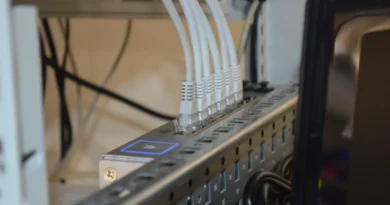What is a Datagram Concept?
There are two types of datagrams: wired and wireless. Both datagrams and data packets are smaller chunks of data that together make up a movie, image, message, or any other kind of online communication. Datagrams or “packets” are the smallest and most manageable chunks of data that may be sent across the Internet.
The IP addresses of the sender and destination are normally included in the header of each datagram. The actual message is stored in the payload portions. It is still regarded as unreliable to communicate via datagrams since data delivery cannot be assured.
According to Wikipedia, “datagram” was first used in the early 1970s. However, the idea behind it extends all the way back to the 1960s, when it was developed for use by the military.
No matter how out-of-date they may sound, datagrams are still used in our day-to-day internet operations. As a result, you may ask why it’s still being utilised for data transmission in the modern day. In the sections that follow, we go into further detail on datagrams.
Also Read: What is Y2K Error or Glitch?
In what ways are datagrams untrustworthy?
The Internet’s standard-setting publication, Request for Comments (RFC), defines a datagram as “a self-contained, independent entity of data carrying sufficient information to be routed from the source to the destination computer without relying on earlier exchanges between the two and the transporting network.”.
In other words, a datagram is self-contained and autonomous, which means it has all the information necessary to send the data to its intended destination. Datagrams are unreliable since their delivery is not assured.
Here, the definition’s second component is important. Because they don’t follow a predetermined path, datagrams don’t rely on previous exchanges between the source and conveying network. As a result, the receiving network is unable to verify that it has received the data.
Using this method, it’s like sending a telegram back in the day, when you can’t be sure whether someone received your message until you hear back from them. Some telegrams may never reach their intended recipient.
Do Datagrams and Packets Have Distinct Meanings?
There are several significant distinctions between datagrams and packets, despite the fact that they are generally equivalent. Datagrams are smaller than typical data packets, yet they nonetheless contain the same amount of information.
To send a datagram, a sender does not need to communicate with the recipient’s computer. Although they are quicker than a traditional massage, this method is not trustworthy since the source has no means of verifying if the message was actually sent.
The operation of data packets varies. In order for the recipient to verify receipt of all data packets, they carry additional information. As a result, it is more dependable and slower than datagrams.
What Is the Purpose of a Datagram?
Wireless communication relies heavily on datagrams. This data transmission method uses packets, which are divided into smaller chunks, to transmit information. Despite this, in connectionless packet switching, the data is broken up into datagrams. As a result, “datagram switching” has been coined.
An entire datagram’s worth of information is included in a header. Nevertheless, it doesn’t go the same path. It is necessary for the destination computer to re-arrange datagrams that arrive at their destination out of order. Despite this, some datagrams may never reach their intended destinations.
One of the most common uses of datagrams is the User Datagram Protocol. Gaming, audio and video conversations, and other online procedures that prioritise delay over data loss can all benefit from using UDP, a network communication protocol.
When playing online games, a 2 per cent packet or datagram loss isn’t going to make a noticeable difference. Latency of greater than 100 milliseconds may cause you to become impatient. However, some data may be lost during the transfer process if using UDP.
Conclusion
Datagrams, like data packets, are little units of data that need to be sent to the designated destination on their headers. Datagrams, on the other hand, do not necessitate the recipient to attempt to recover lost data, making them both rapid and unreliable. Datagrams, notwithstanding the risk of data loss, are useful for communications in which latency is not tolerable.




